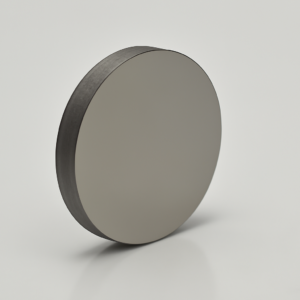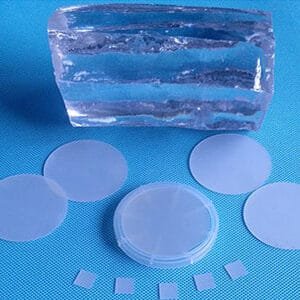Neodymium Doped Strontium Titanate (Nd: SrTiO3) Substrate
Neodymium Doped Strontium Titanate (Nd: SrTiO3) single crystal shares a structural similarity with standard SrTiO3, making it highly compatible with perovskite materials for epitaxial growth. With its excellent lattice matching capabilities, Nd: SrTiO3 substrates are widely used in advanced research and fabrication of various oxide films. The available doping concentration is 0.05% for superior performance.
Physical Properties of Neodymium Doped Strontium Titanate Substrate
| Property | Details |
|---|---|
| Material | Nd: SrTiO3 |
| Structure | Cubic |
| Lattice (A) | a = 3.905 |
| Growth Method | Vernuil Method |
| Hardness | 6.0 – 6.5 (Mohs) |
| Melting Point | 2080°C |
| Doped Concentration | 0.05% Nd |
| Density (g/cm³) | 5.122 |
| Thermal Expansion | 9.4 (x 10⁻⁶/°C) |
| Dielectric Constants | ε = 5.2 |
| Dielectric Loss | ~ 5 × 10⁻⁴ (300K), ~ 3 × 10⁻⁴ (77K) |
| Chemical Stability | Insoluble in water |
Neodymium Doped Strontium Titanate Substrate Specifications
| Parameter | Details |
|---|---|
| Sizes (mm) | 10×3, 10×5, 10×10, 15×15, 20×15, 20×20 |
| Thickness | 0.5 mm, 1.0 mm |
| Polishing Type | SSP or DSP |
| Orientation | <100>, <110>, <111> |
| Redirection Precision | ±0.5° |
| Edge Redirection | 2° (special: 1°) |
| Crystalline Angle | Custom sizes and orientations available |
| Surface Roughness (Ra) | ≤5Å (5µm × 5µm) |
Packaging of Neodymium Doped Strontium Titanate Substrate
Nd: SrTiO3 substrates are packaged in a controlled cleanroom environment to ensure their integrity and quality. Each substrate is securely sealed in a class 100 clean bag or wafer container within a class 1000 clean room, providing protection against contamination during storage and transport.





Reviews
There are no reviews yet.